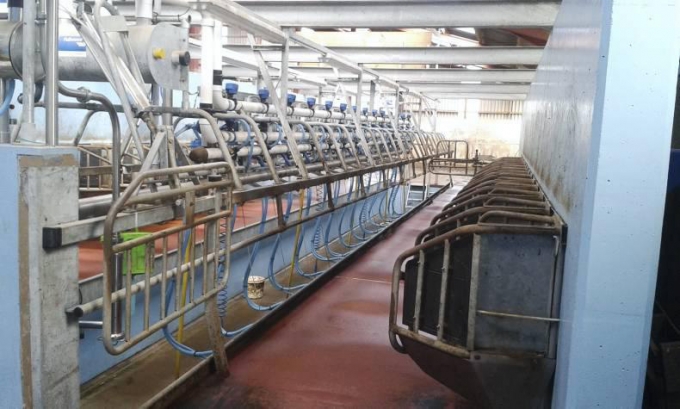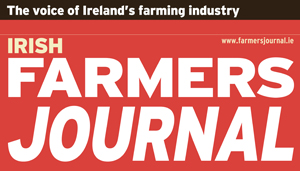Dairylink: Feeding for condition score rather than milk yield in Co Down
5th December 2015

Conail Keown on how managing freshly calved cows differently to stale cows has huge benefits for costs and condition score.
Farmer focus – Nigel Corbett, Dromara, Co Down
Dairylink project farmer Nigel Corbett runs a 100-cow herd of Holstein Friesian cows near Banbridge, Co Down. Nigel, whose calving period runs from October to May, has identified the management of cow condition as a key area for his business.
He wants to ensure that his cows are at the correct condition throughout the lactation period and also during the dry period in order to improve the reproductive performance of the herd and to reduce potential problems during the transition from dry cow to milking cow.
The Corbett herd was body condition scored during a recent discussion group meeting on the farm. The main milking herd consists of 70 cows, of which 35 have calved since October, while the remainder are at a later stage in lactation or dry.
All cows were observed to be in ideal condition, with the exception of 10 late lactation cows, which had a score of 2.4. These cows were subsequently earmarked for a longer dry period to allow their condition to improve.
Freshly calved cow condition was shown to be ideal, with cows generally calving without issue and consequently getting a good start in lactation. Current herd production is highlighted in Table 2.
Dry period
Nigel plans to dry the low condition cows immediately to allow a two-month dry period, which will be enough time to positively influence body condition score by 0.5 before calving.
For reference, one unit of body condition score is equivalent to roughly 60kg of liveweight. At a liveweight gain of 1kg/day, it will take two months for a cow to gain 60kg liveweight.
Twenty-five cows currently dry on the farm are receiving good-quality silage and 1.5kg of concentrate to include dry cow minerals. However, body condition on these cows was established as ideal for the dry period. Consequently, Nigel will remove the concentrate feeding for these cows and will simply dust his mineral supplement over the silage being offered to these cows each day.
In Nigel's case, this represents a concentrate cost saving of £900/month for the farm.
The herd was housed full-time on 7 November this year, three weeks later than last year, as ideal grazing conditions allowed this without any consequence to ground conditions or cow body condition.
Nigel focused on budgeting grass ahead of cows, especially in the last rotation, which ensured that the herd was allocated the correct amount of grass.
This also allowed for a structured approach to the closing of paddocks for winter, something that Nigel will benefit from in the spring when the cows return to grazing.
Body condition scoring
The greatest loss of cow body condition occurs in early lactation when milk production is high.
During the first 70 days of lactation, cows use their fat reserves to support production and can lose between 3% and 10% of their body weight over this period.
The level of fat cover increases again in late lactation and during the dry period, when the energy demands of the cow are much lower. The ideal change in cow condition score during the lactation cycle is shown in Figure 1, with the target condition score for the key stages of lactation illustrated in the Table 3.
Managing cow condition
The milking cows are fed good-quality first-cut silage and concentrate through the parlour.
Nigel's milk parlour is equipped with feeding to yield and can allocate concentrate accurately. However, to benefit from this, the parlour must be set up correctly to start with.
Nigel's silage analysis suggests that his silage is of a good enough quality to produce 14 litres of milk plus cow maintenance.
This means that the parlour should be set to deliver concentrate to cows producing above 14 litres.
Nigel has removed the base concentrate allocation of 1kg per cow and has ensured that freshly calved cows have an incremental allocation of concentrate for the first 10 days of lactation with a maximum feeding level of 8kg of concentrate built into the feed plan.
Concentrate is allocated based on 0.45kg/litre for each litre above what silage can sustain, which is 14 litres.
Straw
Straw had been included in Nigel's diet at 0.5kg/cow and mixed with silage. This has also been removed from the feed plan in an attempt to maximise silage intake and reduce the dilution effect that the straw was having on silage quality.
This also allows Nigel the option of parking the diet feeder, which will save on labour and fuel costs through the winter.
This article has been reproduced with the kind permission of the Irish Farmers Journal. Please click on the below Irish Farmers Journal logo to be brought to additional dairy articles
